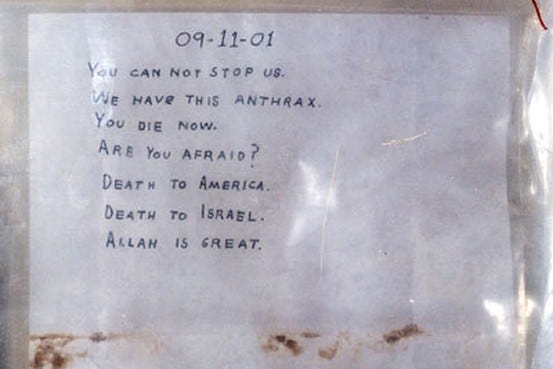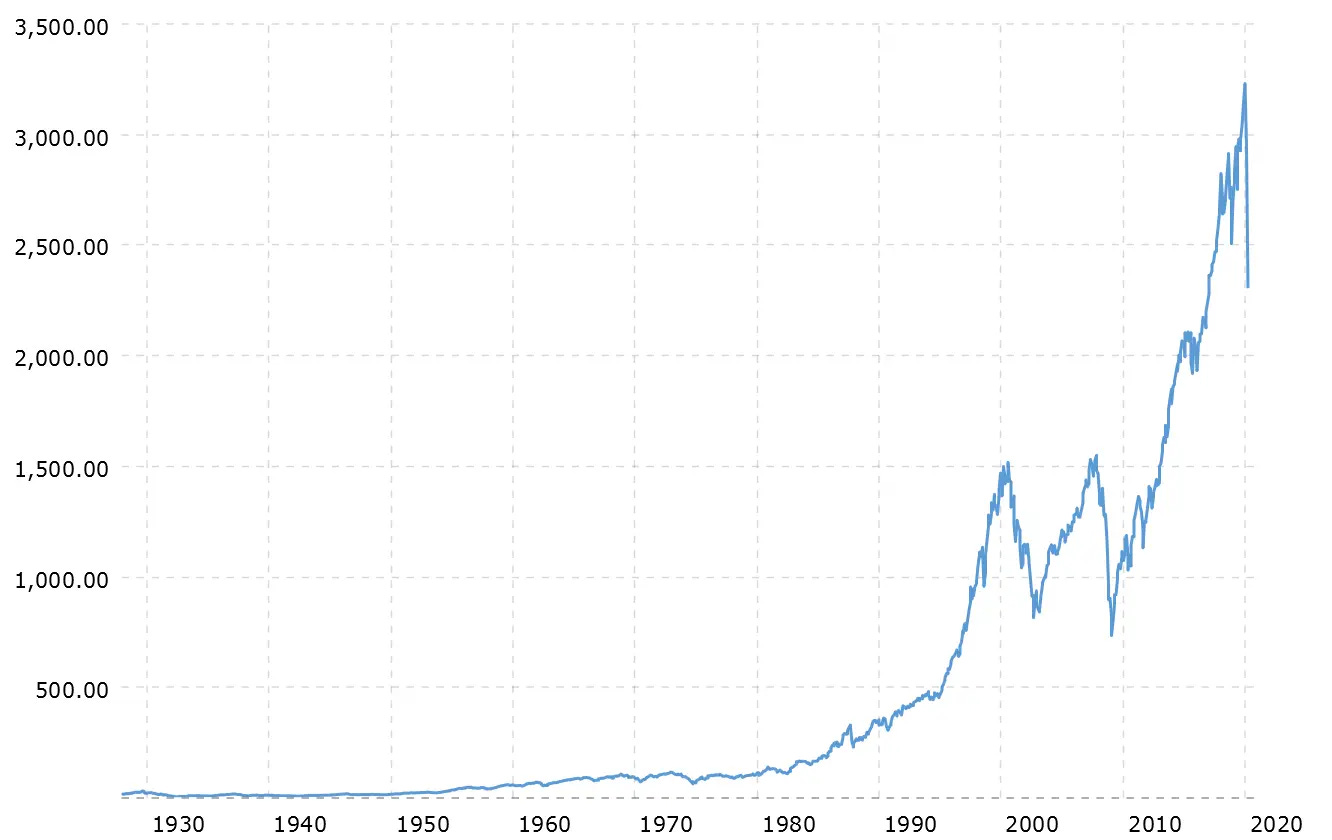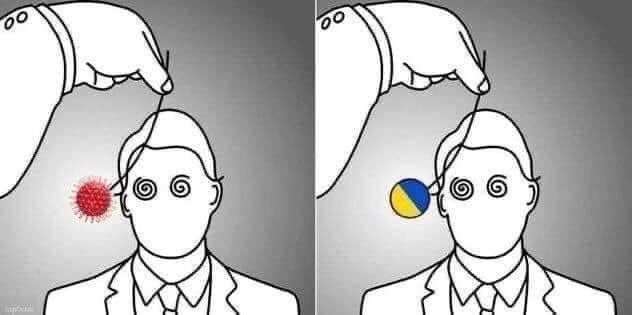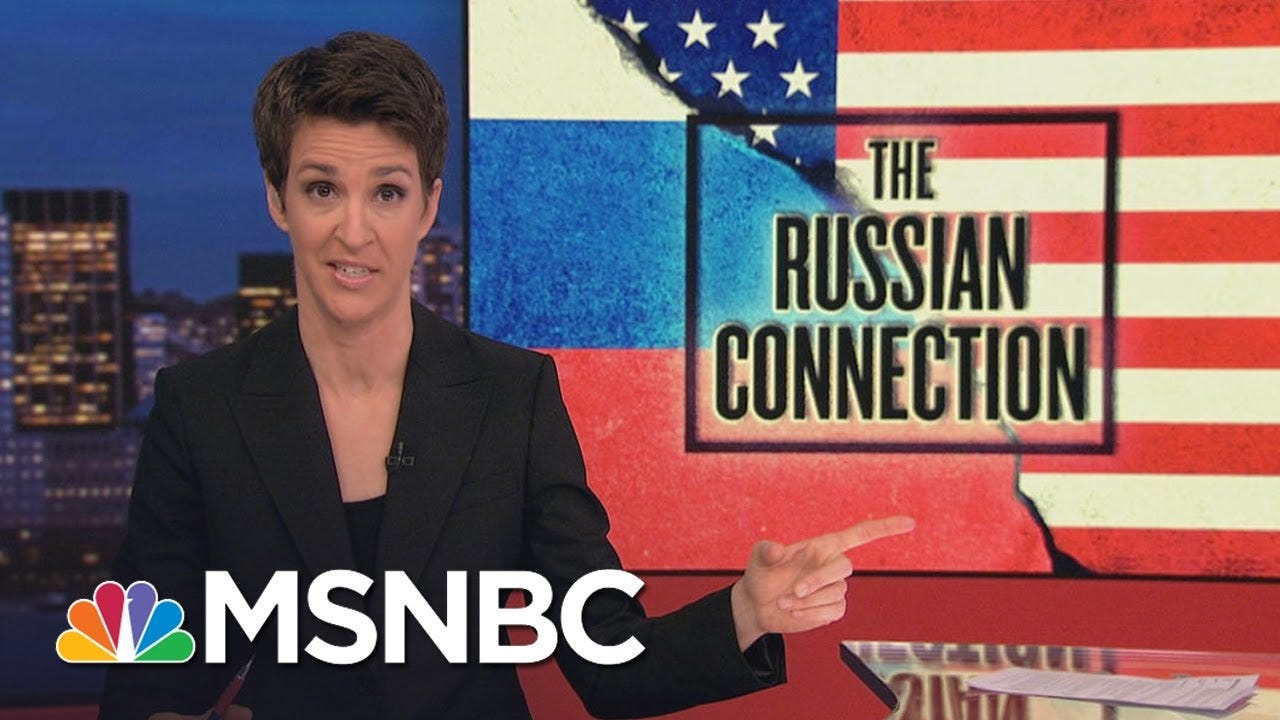When did the world go crazy?
Searching twenty years of hold-my-beer one-upmanship for the tipping point
Turning and turning in the widening gyre The falcon cannot hear the falconer; Things fall apart; the centre cannot hold; Mere anarchy is loosed upon the world, The blood-dimmed tide is loosed, and everywhere The ceremony of innocence is drowned; The best lack all conviction, while the worst Are full of passionate intensity. - from "The Second Coming", William Butler Yeats, 1920
It’s hard to pinpoint just when things went full-on batshit. At this point we’re so inured to repeated infusions of crazy that tracing it all back takes real effort, and memories of the world we lost have dimmed even for those old enough to remember.
A case can be made for as far back as 2001 when America’s entire national security apparatus somehow failed to stop 19 foreign men known to intelligence, barely proficient in flying single-engine Cessnas, from hijacking four jetliners to kill thousands, changing the the world forever. On its heels followed a domestically produced anthrax attack disguised as a foreign terror attack, and with it the last Congressional holdouts posing any realistic threat to the so-called Patriot Act’s passage were swept aside. A liberty destroying law fully drafted and ready to go when the horror of America’s new Pearl Harbor still reverberated around the globe found it’s moment. America transformed overnight into a surveillance and police state, unleashing a global war against a tactic — terror(!) — which presaged our slow decline.

Another strong contender is 2008. In the years prior, America’s central bankers had learned to soothe a war-weary nation by printing enough money to ignite the mother of all financial bubbles, built on a mountain of debt. The leveraged traders of the 1920s could only have dreamed of such riches, but, just as in their time, it all ended disastrously. The bubble finally burst amidst skyrocketing summer gas prices, sweeping thousands of shiny new Hummers off the roads and into chop shops, seemingly overnight. Soon after, insolvent homeowners lost it all. Investment banks and automakers that had endured for generations teetered and markets melted down.
But that crisis, so existentially unsettling at the time, was “solved” by those same bankers when they replaced the previous bubble with a new one of even more unprecedented size, one that endures to this day. Decades of conventional wisdom were thrown out the window as the Fed bought up everything with a price tag. They transferred loads of bad debt from private hands to public, further eroding the dollar’s purchasing power for low- and middle-income Americans. In so doing, they hollowed out Main Street to save Wall Street. And so the corrosive assault on local commerce in favor of dependence on remote governments, corporations, and financial institutions, perfected in the mass shutdowns of the 2020s, was conceived and first put into practice when Covid was but a gleam in Tony Fauci’s eye.

I’m ambivalent on when crazy truly reached for the sky, but I keep coming back to 2016. That year America faced a choice for president between the inveterate war hawk and darling of Wall Street, Hillary Clinton, essentially George W. Bush in drag, and the child-like, endlessly self-promoting real estate mogul and TV personality Donald Trump. It was a woman who wouldn’t stop condescending to us against a man who wouldn’t stop trolling us.
While Clinton’s campaign was merely lackluster and tone deaf, with the candidate yelling at the crowd half the time in a failed attempt at enthusiasm, Trump’s campaign was so amateurish and poorly scripted that it almost seemed intentional — a strange parody of reality. The candidate spent hours at the podium indulging in stream-of-consciousness monologues peppered with references so obscure that his audience must’ve had no idea what the hell he was talking about.
Entertainment featured acts like the USA Freedom Kids, a group of young girls who lip-synched an awkwardly phrased number set to the tune of the World War I patriotic song “Over There”, re-worded as an homage to Trump. This accompanied a comically choreographed routine that was like a prank snatched from a Sacha Baron Cohen film. Scenes like this were so cringeworthy that even some of the MAGA crowd weren’t sure whether to clap, laugh, or leave.
It felt as if we were being played, a feeling that has endured through subsequent waves of crazy. But by whom and to what end it was impossible to tell. When the presidential debates raised political acrimony to levels previously unknown and lowered IQ scores it was mindboggling to remember that the Trumps and the Clintons had once been friendly, photographed smiling together at social events. The Clintons attended Donald and Melania’s wedding. Ivanka had been friends with Chelsea. Et cetera, et cetera.
Had Clinton been elected and served two terms, the American presidency would then have been held by just two families for 28 of the preceding 36 years. (Our own aristocracy!) As the establishment candidate, she was clearly supposed to win. The bicoastal elite who revel in identity politics were hyped for the glass ceiling of New York’s Javits Center to symbolically break for the first woman president on election night. Instead, it came crashing down on their heads. A sheepish John Podesta was trotted out to tuck crying liberals into bed, the formal indignities of concession postponed until the next day.
That event stunned Clinton’s sponsors as it did everyone. When the dust settled, their indignation turned to action. A failed pre-election plan to undermine candidate Trump was dusted off and given new life to try and torpedo his upcoming presidency, the product of an election considered illegitimate because, for once, the unwashed masses had rebelled against the mandarins of DC. And so, the Russiagate hoax, until then a creature of the Clinton campaign, was retooled as an operation of the federal government’s vast executive bureaucracy — the “Permanent State”, beholden to the military-industrial complex, that both precedes and outlasts presidents and tells them what to do while they’re there (Trump included, just not as reliably so, therein lying the problem).
It’s impossible to overstate how crazy American politics became in this roughly three-year period prior to the meta-craziness of Covid. The Obama Administration began pumping out trash intelligence assessments authored by hand-picked analysts aligned to the agencies’ interests. No dissenting opinions were allowed. These were people who feared for their jobs and legacies if Trump became a loose cannon and did something like…I don’t know…deliver on his campaign promise to end wars and focus on America’s domestic ills. The intelligence reports and coordinated media leaks were designed to convince the country that it had elected a Manchurian candidate whose strings were being pulled by a malevolent, Marvel-comic Russian dictator. Judging by all the Robert Mueller prayer candles that later popped up in retail shops, many fell for it.
No proof was ever offered to support claims of a Russian state plot to influence, “meddle in”, or “hack” the election (whatever that was supposed to mean), let alone that Trump or his campaign colluded in it. None was necessary. The mere assertion by very important people that the Russians had done it was enough for the media to treat the allegations as unchallengeable fact. Anyone who so much as questioned those assertions was branded a tool of Russia. That was true even of reputable academic scholars who had long been called upon by the media to explain to Americans what made Russia tick. Now they were Putin stooges for counseling moderation instead of endorsing the more fashionable full-fledged crazy.
Millions of Boomers and Gen-Xers who grew up in the shadow of the Soviet Union were primed for this kind of programming. Millennials and younger had been conditioned to absolutely trust authorities that wrapped themselves in the twin cloaks of science and liberalism. They were also ripe for the taking, apt to believe anything they were told about very conservative societies like Russia, abandoning the healthy skepticism they bring to other areas of life.
The campaign these people conducted in the Trump years would’ve made 1950s Red-baiter Joe McCarthy blush. Russian operatives were lurking around every corner. Ridiculous Facebook memes produced by a Russian troll farm in the previous election, featuring the likes of Yosemite Sam and Jesus Christ uttering conservative social commentary, were part of a Kremlin plot to torpedo Clinton and install Trump that actually affected the outcome. Elite prejudices about middle America and disbelief over Hillary’s defeat were so deep and pervasive that they were prepared to accept even the crudest stereotypes of millions of their fellow Americans. They did this because they considered Trump to be such a departure from the norm that virtually anything was fair game in going after him, his supporters, and anyone who failed to utter a full-throated denouncement of him on command.
When all that failed and Trump looked like he could pull it off again in 2020, his enemies were saved by a most unlikely new ally from the world of microbiology. I’ve previously documented in ample detail the craziness of the early Covid years. Suffice it to say, Trump was done in by a virus with a survival rate of 99+%, whose unfortunate casualties were (according to the CDC), on average, older than life expectancy and mortally ill with three or four other conditions that could easily have killed them (and in many cases probably did). This was a tragedy for family and friends affected, but not a justification for turning society upside down.
Virtually every certainty began to be brought into question. Decades of health advice on the futility of masks at preventing the spread of respiratory diseases was suddenly overturned based on no foundation other than the pronouncement of officials. The science now is as clear is it was then and had been for almost a century: all major meta-analyses of studies going back to at least World War II have concluded they don’t have a statistically significant effect. And yet suddenly in 2020 they were mandatory symbols of compliance — the price one had to pay for the privilege of going out in public. For liberals they were a social test; resistance was a scarlet letter.
When the federal health bureaucracy beholden to Big Pharma declared that no off-the-shelf therapeutic could be repurposed and that the only way out would be a fast-tracked new, cutting-edge vaccine, Trump did what he does best: co-opt the moment and use it to his advantage, championing the planned vaccines and taking credit for speeding them through a process in less than a year that should have taken a decade considering the novelty of the mRNA technology behind them.
Once the first of the Western vaccines was introduced, after Trump’s defeat in the strangest election in our history and mere weeks before Joe Biden’s inauguration, things began to get really weird. With Trump out of the way and a trustworthy Permanent State insider installed, vast sums of federal dollars flooded the country to fund the most bizarre campaign in history for a pharmaceutical product. Participants included state and local governments, agencies, and officials, traditional and social media, private organizations, and even comedians.
Covid crazy gradually subsided only when a new variant changed the narrative and a new crisis came along that the Biden Administration could demagogue and throw money at. Russia’s invasion of Ukraine in February 2022 was tailor-made to fuel an orgy of weapons funding, propaganda, and blatant hypocrisy. American officials condemned “Russian aggression” with a straight face, apparently forgetting that their own country had done the same with even more indiscriminate and saturated bombing in Iraq twenty years earlier, and in the Balkans before that.
But now another election season looms, the first since the Permanent State and their media allies went all-in to rid themselves of Trump in 2020-21. In 2016 we had a relatively straightforward election process — one with a dash of crazy sprinkled on top but still essentially a political process. In 2020, the legal system got involved by not getting involved. This was despite the existence of hundreds of sworn affidavits from people in key battleground states and cities claiming directly witnessed irregularities or outright fraud, the flooding of certain states with millions of unsolicited ballots based on voter rolls not updated in 20 years, mass dumps of ballots into drop boxes on street corners, voting periods stretched out over days and weeks, allowing anyone with insight into the trends to determine what margins they needed to overcome, and a range of other highly suspicious ad-hoc changes in the way elections had always been conducted, all conveniently justified by the Covid panic.
The courts steered clear of the whole thing, mostly on technical grounds related to lack of standing and the like. This was partly understandable, as courts have always sought to limit their involvement in inherently political processes — areas where judicial competence and authority was at its weakest. The bruises inflicted on the Supreme Court after their intervention in the 2000 presidential election never fully healed. Judges heeded the lesson and weren’t inclined to repeat that mistake.
But most people are (by design) unaware of just how close-run a thing this election was and how easily it could have flipped. If just 44,000 combined votes in Arizona, Georgia, and Wisconsin had gone for Trump instead of Biden, the electoral college would have produced a tie and the election would have been thrown to the House of Representatives. Each state’s delegation would have cast a single vote to determine the outcome, and Trump almost certainly would have won.
But the courts’ refusal to contend with the merits was enough for the media to declare that what the observant had witnessed with their own eyes had been “debunked”, to borrow a phrase so often used these days by the brain-dead. There was “no evidence” for the “Big Lie”, this dangerous threat to democracy that was so similar to the actual lie they themselves pushed for three years about 2016 until old man Mueller was plucked from the nursing home to demolish their fantasies.
This time around, it’s already clear that prosecutors and the courts will be central players in the coming election giga-craziness. The legal system is being used as an affirmative weapon, not merely a passive one, against not only Donald Trump and his circle but even his attorneys. This is the next big strategic shift in the “stop Trump” movement after evidence-free assertions, sham impeachments, frame jobs, and media assaults all failed to loosen his grip on a large segment of the American electorate and the Republican Party. If it succeeds, no one will ever challenge an American election again, legitimate or not, for fear of imprisonment.
With these stakes in mind, it might just be that revisiting the origin story of modern craziness for clues to its ultimate cause is less critical than trying to predict and prepare for where it will take us next. It’s hard to imagine how this next election could play out, with the only currently viable candidates appearing to be a man the establishment brands a new Hitler and a man so apparently senile that he regularly wanders off stage into the rose bushes.
But beyond the election, if we end up having one at all, what’s next? A new pandemic? Climate lockdowns? Digital currencies that can be deleted from offender’s bank accounts at the touch of a button? A nuclear war? Or something so “out there” none of us have yet imagined it?
In this brave new world, your conspiracy theory is as good as mine.
Richie Graham is based in Little Rock Arkansas USA and writes from a free-market libertarian, anti-interventionist perspective.



